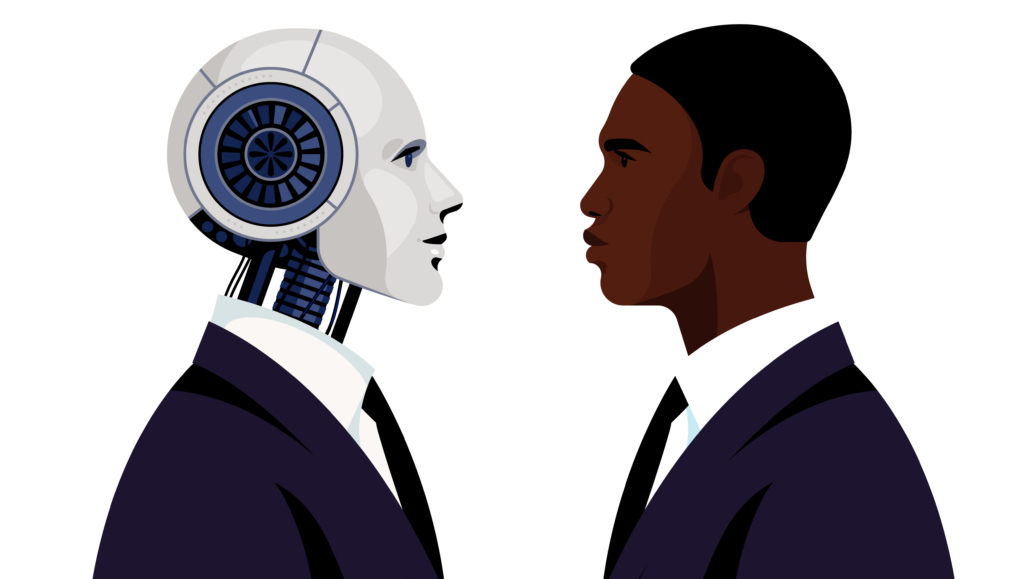#EconomicPolicy
#EconomicPolicy79
Contacts:
Alessandra Bonfiglioli: a.bonfiglioli@qmul.ac.uk
Rosario Crinò: rosario.crino@unibg.it
Gino Gancia: gino.gancia@gmail.com
Ioannis Papadakis: I.Papadakis@sussex.ac.uk
VoxTalks Economics Live from the 79th Economic Policy Panel Meeting.
What will be the impact of AI on the labour market?
AI adoption and jobs
US evidence of an employment hit from artificial intelligence to all but high-earners
New analysis of data on US commuting zones over the past two decades indicates that those specialised in industries that experienced faster growth in adoption of artificial intelligence (AI) technologies have suffered a fall in employment relative to the local trend. The study by Alessandra Bonfiglioli, Rosario Crinò, Gino Gancia and Ioannis Papadakis, prepared for the journal Economic Policy, finds that in the average location, AI adoption was responsible for a fall in the employment rate by 0.6 percentage points relative to a hypothetical scenario with no adoption at all.
The research depicts a rather grim picture, with job losses across a wide spectrum of occupations. The only workers that stand to gain in terms of their employment prospects are those in the top 10% of the earnings distribution and those requiring a degree in STEM disciplines (science, technology, engineering and mathematics). These results suggest that AI has so far contributed to the automation of jobs and to the widening of inequality.
The deployment of AI technologies, which started in the early 2000s, has witnessed a sharp acceleration through the 2010s and especially during the last couple of years with the introduction of generative AI tools. Given the breadth of its potential applications, AI has been raising hopes and concerns as to whether it will usher in a spell of reinvigorated employment growth or a surge in unemployment. While there is plenty of speculation on what might happen in the future, the new study estimates what is already happening due to the adoption of AI technologies since 2000.
Doing so presents two challenges. The first is that while AI has become a familiar concept, its adoption is difficult to measure, as there are no official statistics available. Yet, to use AI technologies, firms need workers in occupations that require very specific programming skills used for machine learning and data analysis.
Moving from this observation, the authors detect AI adoption from the increase in the employment share of AI-related occupations, such as data scientists, across US commuting zones over the period 2000-20. This measure is very effective at capturing the diffusion of AI both in expected places, such as Boston, Seattle and Silicon Valley, and in new high-tech hubs around cities, such as Boulder, Bozeman and Salt Lake City.
In an outcome that is different from that for automation, AI adoption has taken place predominantly, though not exclusively, in the services sector.
The second analytical challenge is that when studying how differences in AI adoption across locations determine different paths in their employment rate, it is important to note that there might be confounding factors that could jointly affect both variables. To isolate the causal effects of AI across locations, the authors use a measure of the exposure of these areas to AI that combines the initial industry mix at the local level and the subsequent growth of AI-related employment at the national level.
They find that commuting zones specialised in industries that experienced faster growth in AI-related occupations suffered a fall in employment relative to the local trend. For the average commuting zone, AI-adoption was responsible for a drop in the employment rate by 0.6 percentage points, relative to a hypothetical location with no adoption at all.
Although the effect is more pronounced in the services sector, it is also sizeable in manufacturing, which suggests that AI may be ancillary to labour-displacing automation.
When it comes to the type of workers that are more severely hit, the study depicts a rather grim picture, with job losses across a wide spectrum of occupations. The only workers that stand to gain in terms of employment prospects are those in high-paying occupations (that is, in the top 10% of the earnings distribution), and those requiring a degree in STEM disciplines. These results suggest that AI has so far contributed to the automation of jobs and to the widening of inequality.
Artificial Intelligence and Jobs: Evidence from US Commuting Zones
Author:
Alessandra Bonfiglioli (University of Bergamo and Queen Mary University of London)
Rosario Crinò (University of Bergamo)
Gino Gancia (University of Milan Bicocca and Queen Mary University of London)
Ioannis Papadakis (University of Sussex)









